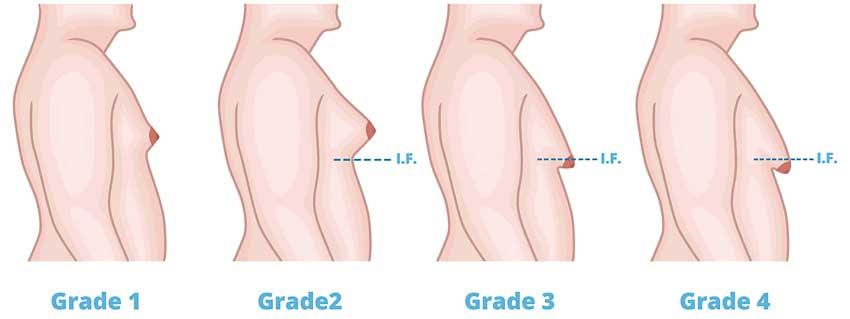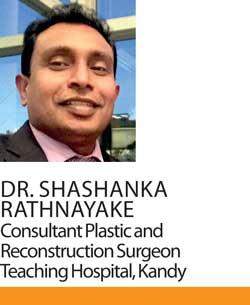Reply To:
Name - Reply Comment

 Male breast enlargement or ‘Gynaecomastia’ is defined as the presence of >2 cm of palpable, firm, subareolar gland and ductal breast tissue. The male breast comprises two main components, glandular tissue (firm and dense) and fatty tissue (soft). The ratio of glandular to fatty tissue in any breast varies from individual to individual and in gynaecomastia there may be an excess of both.
Male breast enlargement or ‘Gynaecomastia’ is defined as the presence of >2 cm of palpable, firm, subareolar gland and ductal breast tissue. The male breast comprises two main components, glandular tissue (firm and dense) and fatty tissue (soft). The ratio of glandular to fatty tissue in any breast varies from individual to individual and in gynaecomastia there may be an excess of both.
Gynaecomastia is common and is thought to be present in at least a third of men in the course of their lifetime. Prevalence of asymptomatic gynaecomastia is reported as 60-90% of neonates, 50-60% of adolescents, and 70% in men aged 50-69. To enlighten our readers about ‘Gynaecomastia’ we used Dr. Shashanka Rathnayake, who is a Consultant Plastic and Reconstruction Surgeon and attached to the Teaching Hospital, Kandy, as a source person.
Serious problem?
Gynaecomastia is mostly a benign condition and a breast cancer is only detected in 1% of cases of male breast enlargement. It can be physically embarrassing and psychologically distressing for patients and this should not be underestimated.
The following signs may possibly increase suspicion of breast cancer in men. 
Causes
In the majority of cases there is no known cause and, although rarely talked about, it is a common condition. Most teenage boys experience some degree of breast enlargement affecting one or both breasts. However, by early adulthood less than 10% have a residual problem. This incidence rises with age, reaching approximately 30% (1 in 3) in older men.
Rarely, the breast enlargement can be caused by medicines (for high blood pressure, heart disease and prostate cancer), drugs (such as marijuana and anabolic steroids), some diseases (such as liver failure and some cancers) and some very rare congenital abnormalities (errors of development that one is born with). These causes should be excluded by the surgeon during an initial consultation.
Additional information will be needed at this consultation regarding overall health, chest size and body shape, previous chest surgery, any bleeding tendencies and healing capabilities, some of which will be affected by smoking, alcohol and various medications.
For men who feel self-conscious about their appearance, breast-reduction surgery can be helpful. The procedure removes tissue from the breasts, and in extreme cases excess skin.
Treatment
Complete resolution can occur if the underlying cause is identified and treatment initiated before fibrosis of breast tissue occurs. If no underlying cause is discovered or gynaecomastia is long-standing with development of fibrosis then surgical removal of breast tissue is the only effective therapy. Surgery involves subcutaneous mastectomy or liposuction associated mastectomy. It is considered an option only where medical treatment has failed or side-effects are unacceptable, there is malignancy, or if gynaecomastia is long-standing and symptoms are severe.
If there is predominantly a diffuse fatty enlargement of the breast, liposuction is the usual treatment. This involves sucking out the tissue through a small tube inserted via a 3-4mm incision (see information sheet on liposuction for more detail).
If excess glandular tissue is the primary cause of breast enlargement, it may need to be excised (cut out) with a scalpel. This will leave a scar, usually around the nipple edge. This excision can be performed alone or in conjunction with liposuction. Major reductions that involve the removal of a significant amount of tissue and skin may require larger incisions. However, scar is hardly visible.
Other facts
Most operations for gynaecomastia take about 90 minutes to complete and are performed under general anesthesia, or in some cases, under local anesthesia with sedation. 100% success rate is present if the surgery is done by an experienced plastic surgeon and importantly it never recurs.
A mild pain may be present. The chest is swollen and bruised for a while and it can be difficult to assess the full effect of the operation initially.
Postoperative instructions
To help reduce swelling, patients are often instructed to wear an elastic pressure garment continuously for one or two weeks. Normal activities may be resumed in about two weeks but energetic exercise and heavy lifting should not be attempted for about three to four weeks.
in general, it takes about six weeks before one can return to completely normal activities.
Complications
The potential complications of the surgery are relatively rare. They include inadequate removal of breast tissue, an uneven contour to the chest and reduced nipple sensation. However, if performed by an experienced plastic surgeon these complications are rare and outcome is great.